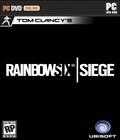After getting back from E3, where everything seemed to have been focus-tested and market-studied to within an inch of its life, it's good to get back home, pick up a controller, and play a game that's content to pretend the last 11 years or so never happened. Alice: Madness Returns is a 3-D platformer, which says a lot right there, really.
A lot of the old platformer series have diversified into more action-based games or switched genres entirely. Spyro's grimly holding on for dear life while doing open-world fetch quests, modern Sonic games are more like Wipeout than anything else, and Mario's moved on to screwing around with gravity and conquering entire planets. Somewhere along the line, 3-D platformers became a charming artifact of the last decade, and most of what was once the entire game has been subsumed into other genres, or replaced entirely by post-Sands of Time parkour.
Madness Returns, by comparison, is about jumping and pretty much nothing else. You start at point A; you need to get to point B; unfortunately, the yawning, bottomless abyss between the two is only bridged by a handful of narrow platforms, some of which are moving or covered in spikes or invisible or temporary. There may be occasional deviations into things that are not necessarily jumping, like chopping up demon crabs with a kitchen knife, but they are momentary distractions that will soon allow you to get somewhere where you can do more jumping.
That's the game, presented without fetch quests, open worlds, or anything remotely resembling sympathy. Have fun. Also, put a pillow across the room somewhere so your controller has something soft to land on when you throw it.
Platformers in general run on a healthy amount of dream logic, and more or less always have. The genius of both Madness Returns and its predecessor, 2000's American McGee's Alice, is that they take that surrealism and run with it. The Wonderland of the games isn't necessarily any more or less weird than the Mushroom Kingdom or Mobius or something, but it's presented as deliberate and frequently symbolic instead of an absolute given. A lot of the enemies and stages work on multiple levels, either as metaphors for what's happening to Alice in the real world or what she's trying to figure out. This is neatly underscored by the brief real-world scenarios that form the introductory part of each chapter, where everything is markedly less colorful and Alice can't even jump, let alone attack.
Just based on its design, music, writing and solid voice cast, Madness Returns is worth checking out. There's a lot here that I really like, and I'd recommend a rental on that basis if you're at all interested in that kind of thing.
Unfortunately, then there's the gameplay.
Playing Madness Returns is often frustrating because it doesn't feel like anywhere near as much work went into the game mechanics as the production design. There's a lot of fake difficulty strewn throughout the game, where an enemy or encounter isn't hard to beat because it tests your reflexes, timing or awareness, but because the fighting system or controls have certain weaknesses and the encounter in question stresses them.
For example, Alice can twirl in mid-air to gain a little extra height on her jumps, and holding down the jump button after a twirl makes you glide slowly to the ground. The entire twirl/glide mechanic comes off less like a feature and more like something they implemented to cover up a lack of polish. It's imprecise, slow and often doesn't work anywhere near as well as it should. Sometimes, Alice won't twirl at all or does so too late to do any good. Sometimes, she'll get hung up on unremarkable parts of the level's geometry, like a ledge or a crack; other times, she hits the edge of a flat platform and slides off like a soap bubble.
The combat is also remarkably clunky and shares the same problem as the twirl in that the controls are not entirely reliable. Madness Returns often features enemies that you need split-second timing in order to evade or counter, and it makes it really annoying when the move simply does not come out. Even better, the further you get into the game, the more arbitrarily stingy it gets with things like health pick-ups.
More importantly, a big chunk of the combat relies upon a targeting system that is incredibly bad at coping with multiple enemies at once. Alice can lock on to one opponent at a time, which is necessary in order to block attacks or reflect projectiles but also gives you a 270-degree blind spot that encompasses most of the screen. There are a couple of fights, particularly ones that involve enemies that burrow or turn invisible, which are deliberately set up to screw around with the targeting system. There's a particular sequence in the second chapter involving a teleporting enemy that appears and disappears at random. You must be locked on to him so you can shoot the bombs he's throwing, but he's surrounded by these little black slugs that exist in the encounter only to confuse your target lock.
This isn't anywhere near a bad game. I've played a number of those, where it was designed by committee or the money ran out or the marketing team was calling the shots. There's always a sense of bizarre cluelessness to a bad game, like it was put together by an alien race with a different set of manipulative appendages or created in a weekend by people who'd only heard of video games and never played them.
Alice: Madness Returns isn't a bad game; it's a game that isn't quite good enough. Tighter controls, a little more testing, and either much less or much better combat would've turned Madness Returns into one of the all-time greats. Right now, it's picturesque but annoying. It's fun to look at, some of the stages are OK, and there's a lot of variety both in the level design and in the basic gameplay, but as a game, it's frequently half-baked.
Score: 7.0/10
More articles about Alice: Madness Returns










 Gaming visionary American McGee returns to Wonderland! Alice: Madness Returns takes place 10 years after the conclusion of the original game. After spending a decade institutionalized in an insane asylum, Alice is finally released to the care of a psychiatrist who may be able to help her conquer the nightmarish hallucinations that still haunt her.
Gaming visionary American McGee returns to Wonderland! Alice: Madness Returns takes place 10 years after the conclusion of the original game. After spending a decade institutionalized in an insane asylum, Alice is finally released to the care of a psychiatrist who may be able to help her conquer the nightmarish hallucinations that still haunt her.




































